PHOTO ESSAY
David Kramer’s ‘Karoo Kitaar Blues’ – one magical night in the ‘promised garden’
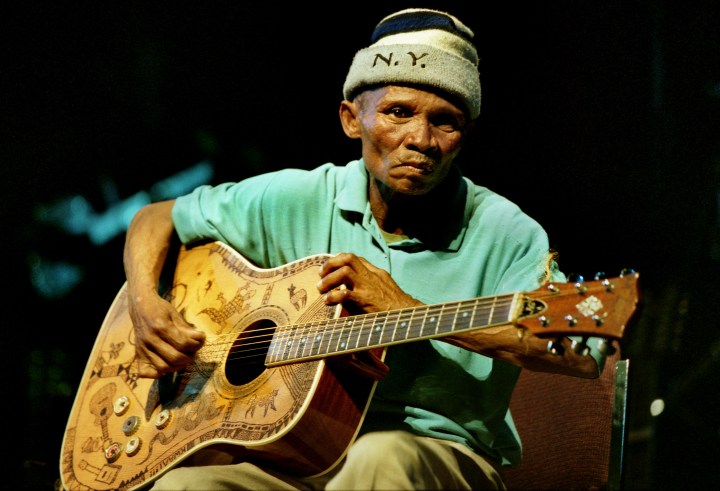
When Tokas Lodewyk played his solo set the first time I saw the ‘Karoo Kitaar Blues’, it wasn’t his casual brilliance, at times using only one hand, that caught my attention. It was the faraway look in his eyes.
Looking back at the times I was fortunate enough to spend a bit of time with and photograph them – at home, backstage and in performance – that first encounter at the Port Elizabeth Opera House in 2002 and that moment with Tokas encapsulates the Karoo Kitaar Blues for me.
Norwegian crime novelist Jo Nesbø summed it up best in a recent interview with The Guardian newspaper. He spoke of Joseph Roth’s The Radetzky March: “I was recently going through the books I’ve inherited from my parents. It follows three generations of a family, with the breakdown of the Austro-Hungarian monarchy as a backdrop, and it’s a gem of a novel. It has this sense of time and place that I know is impossible to construct – it has to already be there within the writer. It’s sad, it’s epic and it has a tragic gravity to it that brings a lump to my throat: the fact that you can’t go back, that the past – not the future – is the promised garden.”
With the tunes and lyrics “within them”, the italic part of this quote, all these years later, puts the Karoo musicians and their music in context. And I am grateful to have been there, “the fact that you can’t go back, that the past – not the future – is the promised garden”.
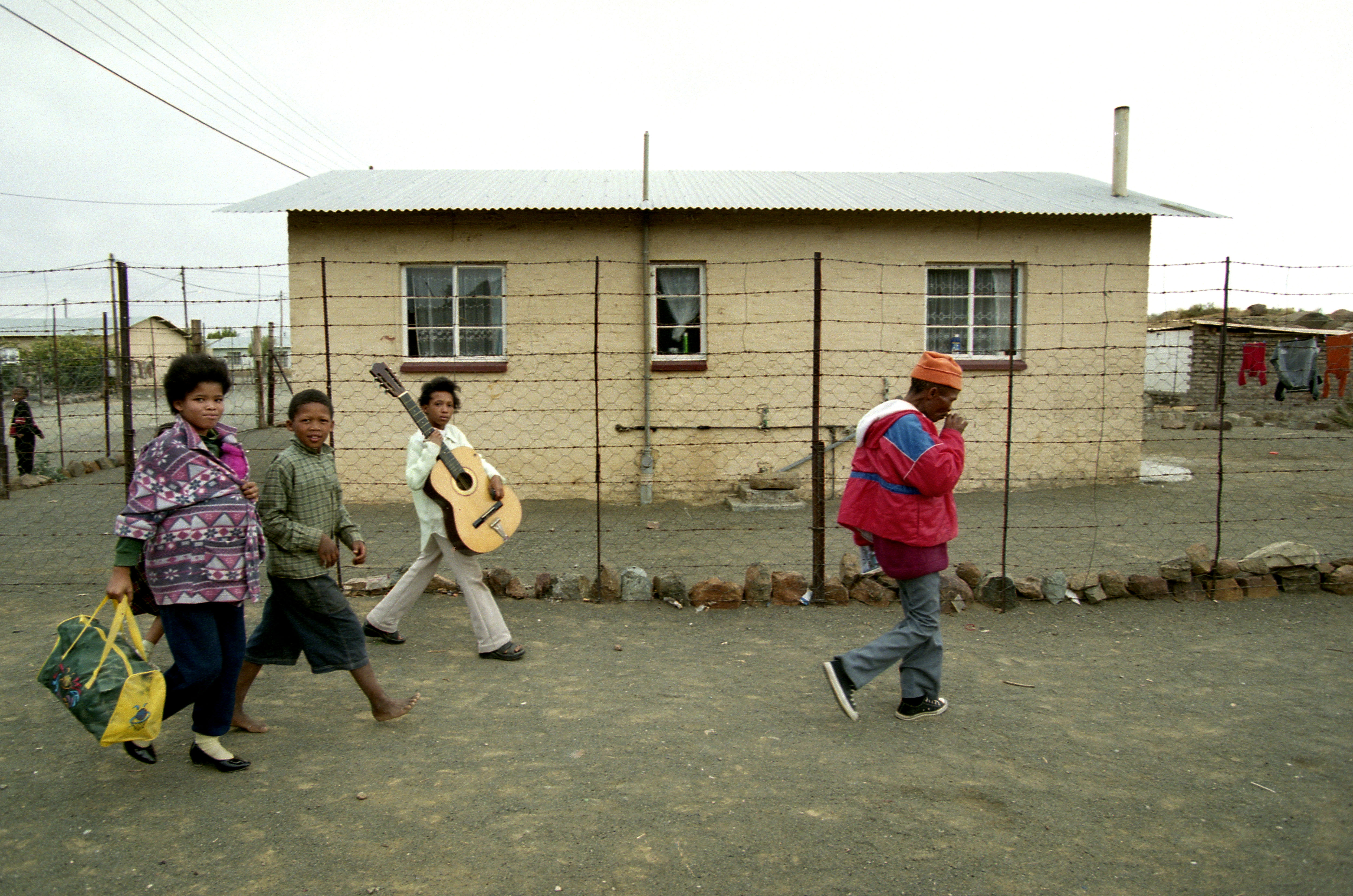
Tokas Lodewyk, Richmond 2002. (Photo: John Hogg)
David Kramer’s work with these unknown musicians is reminiscent of musicologist and folklorist John Lomax, and later his son Alan, whose work of “discovering” and recording blues, country and traditional musicians in the US proved invaluable for the preservation of American folk music. Kramer’s work with these musicians hopefully will have the same value here – our own Karoo song catcher.
The music, although hemmed in by the lurid orange walls of the dank room, was as expansive as the Great Karoo beyond their back door.
Another memorable moment wasn’t just a moment, it was a whole night. It was also on the first trip and at the conclusion of their tour it was time to drop everyone at home. First Tokas in Richmond and then onto Victoria West for the Mouers family (where we stayed overnight). The next day we continued onto Helena Nuwegeld’s hometown of Beaufort West and then through to Chatsworth just outside Malmesbury to deliver Koos Lof. It was that night in Victoria West, in the dark living room of the Mouers family home, which was a converted shop, on the edge of town.
Once we had dropped everyone at the house, David, Martin McAvoy (the VW Bus driver) and I went to find accommodation and have dinner. We returned that evening and witnessed what has become one of my career highlights. A truly authentic evening of music. Some lyrics were changed from those of the public performances. Those were for “ordentlik mense”, these were somewhat raunchy. There was no audience bar us and a few hangers-on and through the lens of a quarter-full bottle of brandy.
Sitting in a circle were David with his notebook, Koos Lof with his accordion, Helena Nuwegeld, Magdalena Mouers on the arm of the chair. Next was the duet of Siena and Jan Mouers. Siena plucked a paper clip from her hair and using it as a plectrum, the evening began. The music, although hemmed in by the lurid orange walls of the dank room, was as expansive as the Great Karoo beyond their back door.
That evening and their live performances are difficult to describe in full, it really is a case of you had to have been there. Everyone felt the magic, it was obvious in the animated audiences after the shows. Siena’s songs as sung by Helena, Tokas in trance, Hannes’s delicate slide guitar played using a teaspoon in his mouth. All organically supported by David’s band and the other musicians. Sometimes upbeat, sometimes not. With many of the songs by Siena Mouers, if they were on sheet music a close look might not reveal a stave of solid black lines but rather strands of barbed wire and the notes as dead birds on the wire.

Siena Mouers removes a paperclip, which served as her plectrum, from her hair. With Jan Mouers. The Mouers home in Victoria West, 2002. (Photo: John Hogg)
I’m not sure if all the KKB musicians fully appreciated the impact they had on their audiences. The trend was that everyone used one dressing room, there was a bit to drink, which was amiably monitored by Howard Links (bass player for David’s band at the time), hand-rolled cigarettes and while the opening number was being performed on stage a small party would be under way in the dressing room by some; others like Jan Mouers just sat quietly, which was what he did most of the time.
On stage, if the mood took, spontaneous dancing would snake around the edges and at times across the front of the stage. While Jan’s performance on stage remained within his subdued character, Hannes Coetzee became all jive, with him and David in leg-raising duets. Before the Mouers family with Helena and Koos happened there would be a bit of banter by David while setting them up – him quietly joking and all of them shy in response, punctuated by genuine, face-wrinkling laughter. Once Jan had tuned his guitar to Die Swart Hel, he and Siena’s loose notes fell into a rhythm, Koos Lof closed his eyes in communion with his accordion and Helena sang. Legs akimbo, her hands slapping down onto her thighs with her head raised back, the queen of the Karoo blues held forth. They soon entered their realm. No different, except for some lyrics, to a Sunday night in the family living room.

Siena, Jan and Magdalena Mouers, Koos Lof and Helena Nuwegeld. The Mouers home in Victoria West, 2002. (Photo: John Hogg)
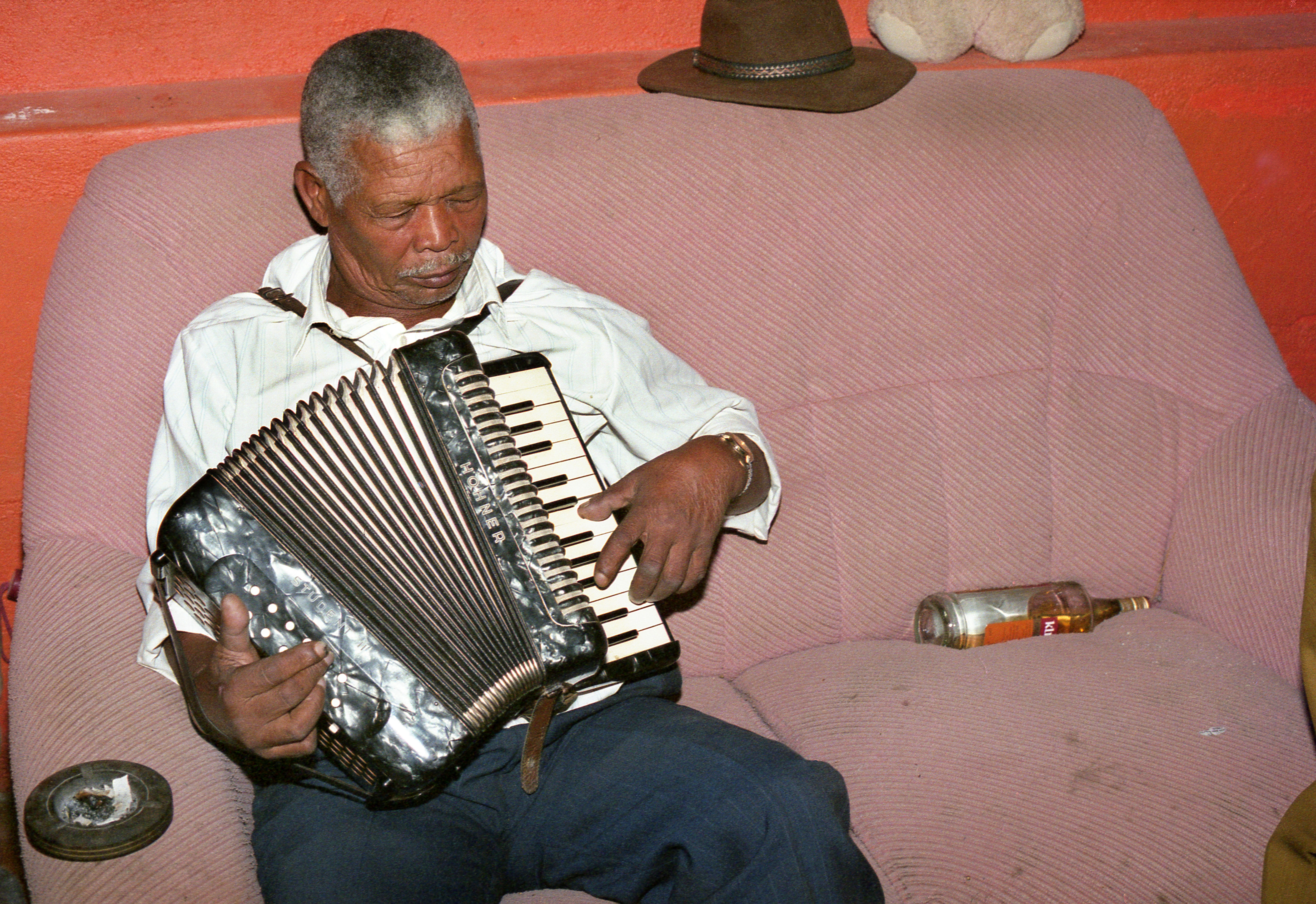
Koos Lof, the Mouers home in Victoria West, 2002. (Photo: John Hogg)
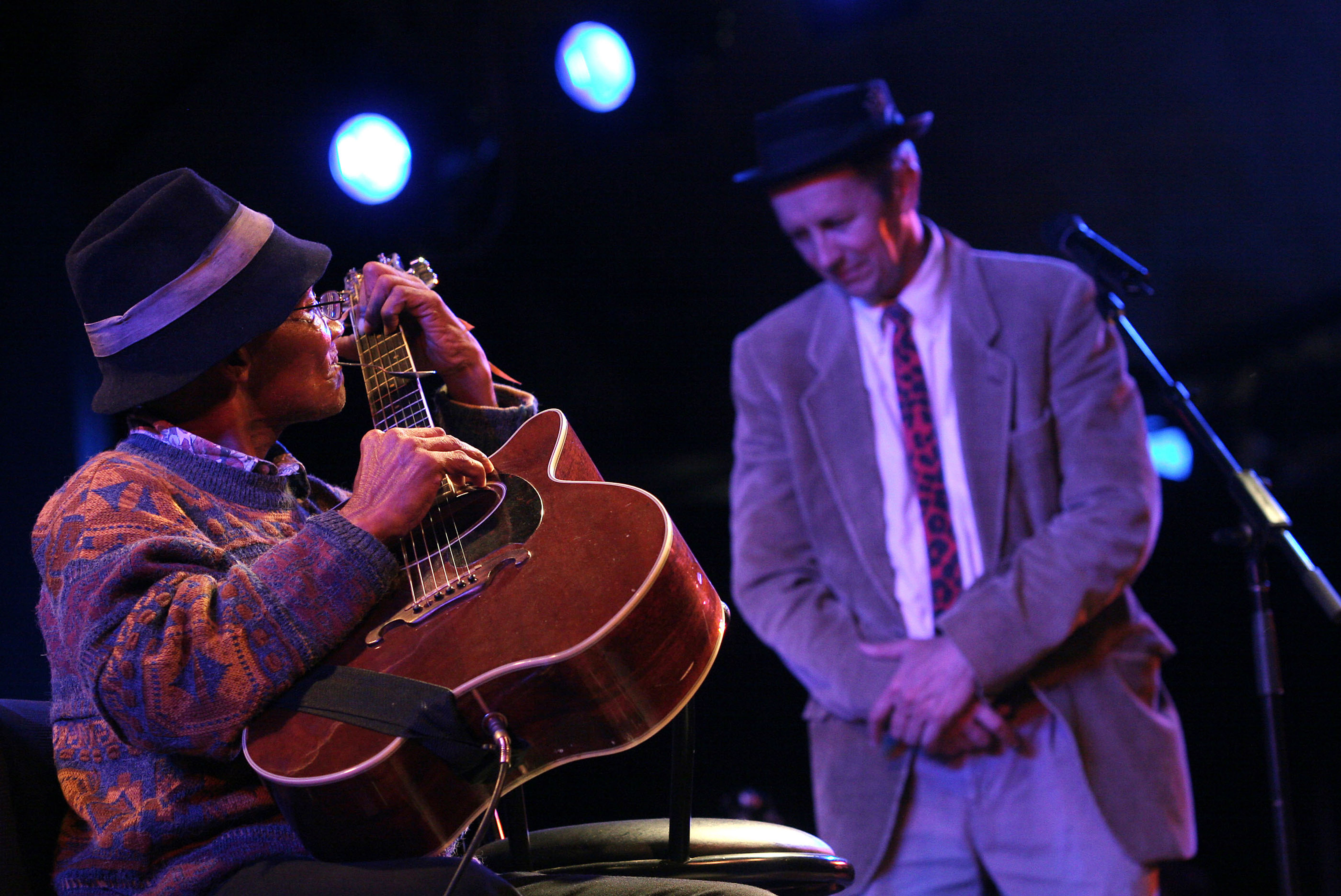
Hannes Coetzee and David Kramer, Spier Amphitheatre, Stellenbosch, 2006. (Photo: John Hogg)

During my search for Helena Nuwegeld in 2006, this was last known address I could find. She lived there with her boyfriend just before they moved onto the farm where both were fatally shot. Just off the N12 between Beaufort West and Meiringspoort. (Photo: John Hogg)
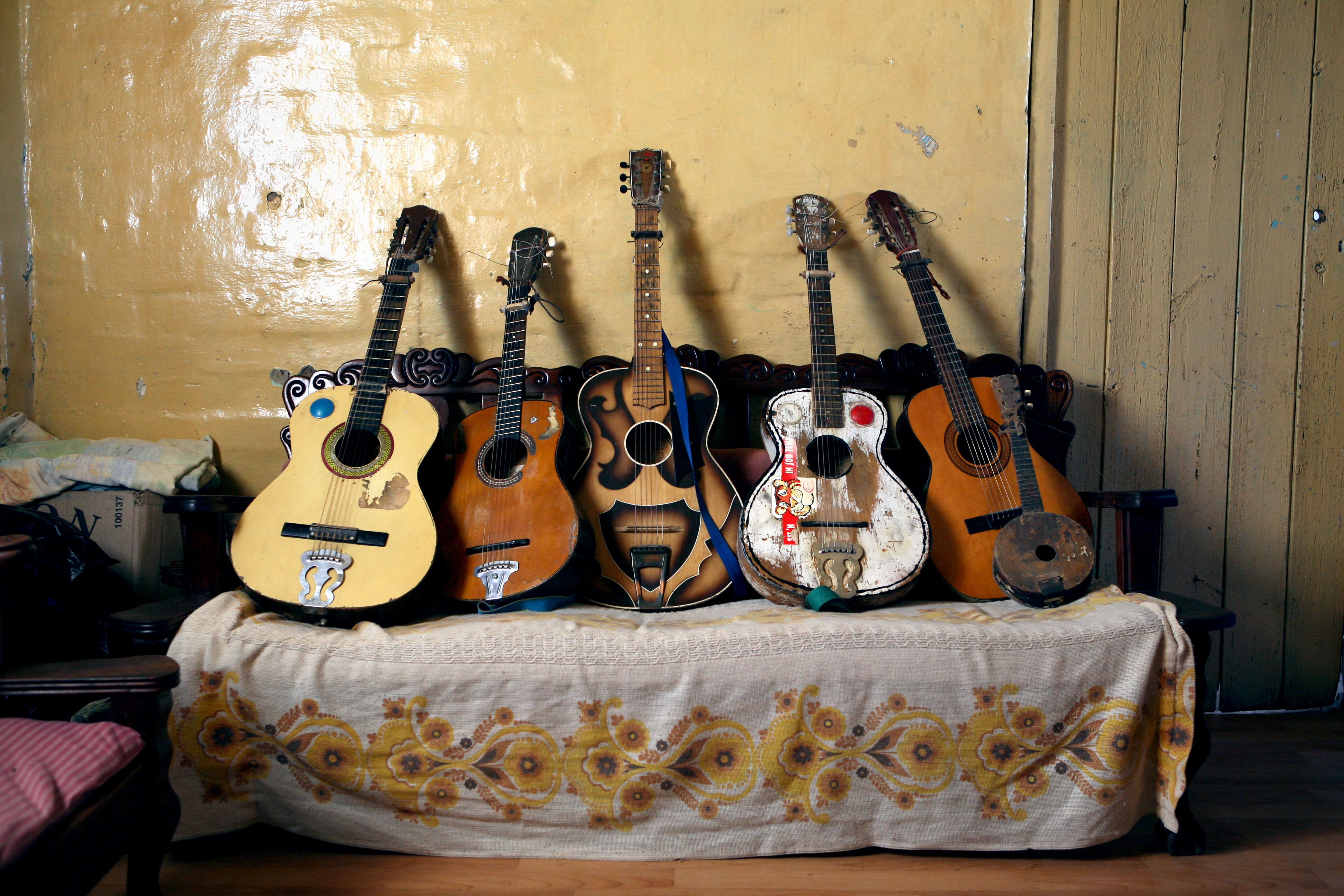
Booi Jors guitar collection, Fraserburg, 2006. (Photo: John Hogg)
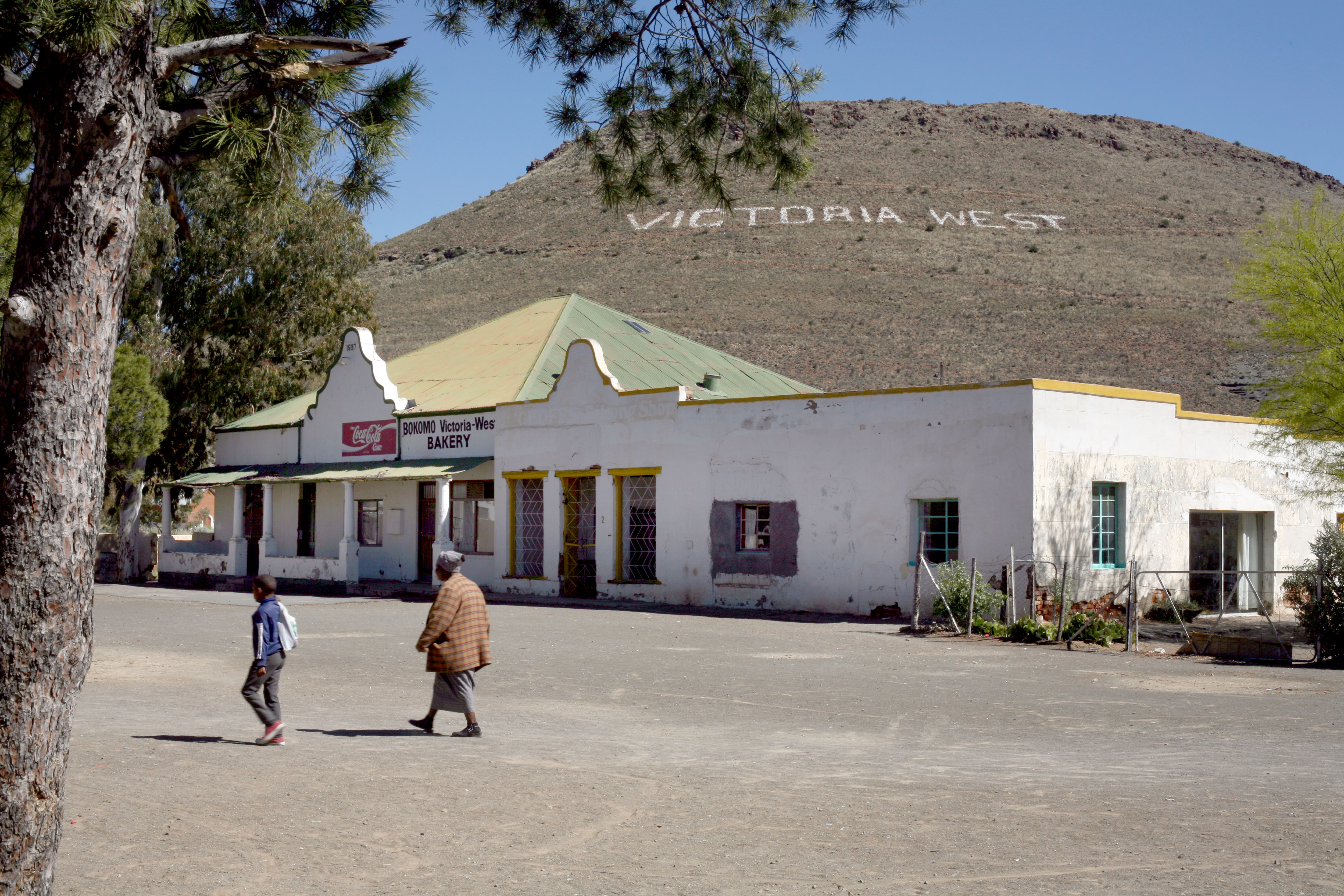
The Mouers home (a converted shop) on the edge of town, Victoria West, 2006. (Photo: John Hogg)
David Kramer explains how we ended up there on that night: “When I was starting out in my early 20s as a songwriter, I came to the realisation that old Afrikaans folk songs that were presented in the FAK Sangbundel as volksliedjies had not originated in the mouths of ‘white’ singers but had been created on the farms by self-taught musicians. This was a liberating insight for me at the time, and allowed me to connect my work to an older South African folk tradition.
“When I was invited by Jan Horn to accompany him on a road trip in 2000 to seek out musicians who still played and sang the ouliedjies I jumped at the opportunity and I was able to connect with authentic folk musicians who were unknown and largely invisible outside of their communities. I invited some of those I met to join me on stage in what became Karoo Kitaar Blues. I wanted to provide a platform to showcase and celebrate these unique talents and draw attention to the fact that this tradition was still alive despite the originators never being acknowledged or appreciated”.
Thanks to David and the musicians I was able to witness, celebrate, and capture some of this during two of their tours in 2002 and 2006, in Gqeberha (Port Elizabeth), Johannesburg, and Stellenbosch. DM
John Hogg’s photographs are on exhibition at the Stellenbosch University Museum for the duration of the Woordfees Festival until Sunday 15 October 2023.









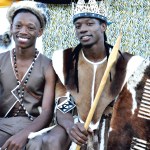









Please play some music!!! Looks wonderful.
Ive watched the doccie countless times and it still moves me.
We all owe David Kramer a huge debt of gratitude. I loved that film with its heartwarming and heartsore moments in the lives of those so original traditional musicians.